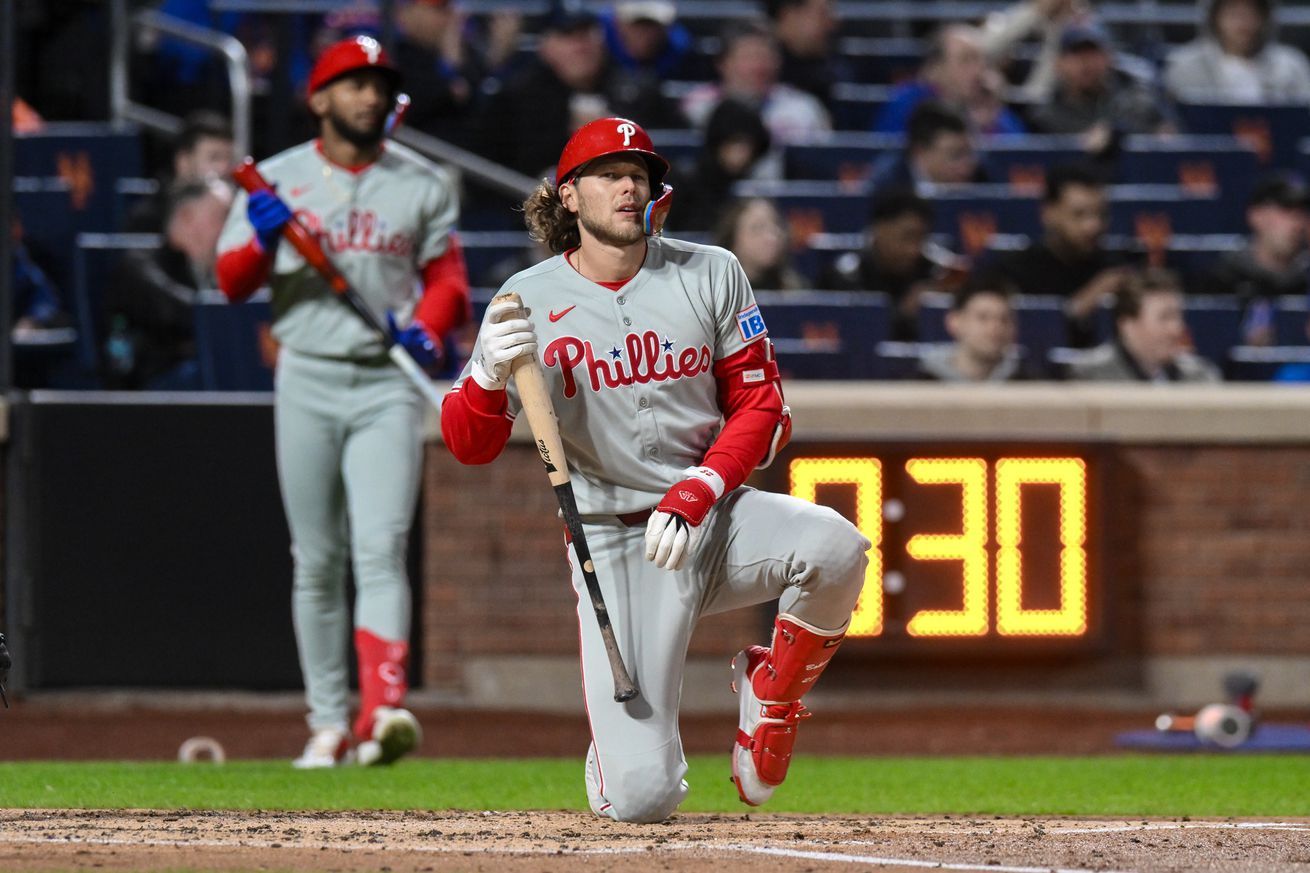
In an attempt to lower their chase rate, have the Phillies sacrificed too much power?
The Phillies were swept by the Mets this week, and while there were several causes for that, one of the most glaring was the lack of production from the offense. They scored a total of eight runs in the three games, but one of those runs came via extra inning ghost runner and three came from a too little, too late home run by Bryson Stott on Monday night.
By glancing at Wednesday’s box score, it looked like they should have had a successful day. They had eleven hits and four walks which is a solid showing. Even that familiar bugaboo of hitting with runners in scoring position wasn’t the issue since they went 5-12 in those situations. But the offense only managed three runs – two in regulation – largely because all eleven of those hits were singles.
That lines up with what we’ve seen from the Phillies offense for the entire season. The team’s on-base percentage ranks fourth in the majors, but they’re only 21st in slugging percentage and 22nd in home runs.
Perhaps part of the problem is the lack of home run hitters in the lineup, but that wasn’t a major issue last year. While Bryce Harper and Kyle Schwarber are the only players you can really expect to hit over 30 home runs in a season, Trea Turner, Nick Castellanos, and J.T. Realmuto have all regularly been in the 20s in recent seasons, and Alec Bohm and Max Kepler have also topped 20 in the past two years.
As a team, they ranked seventh in home runs in 2024, but look at the numbers in 2025:
- Castellanos: 3
- Turner: 1
- Kepler: 1
- Realmuto: 1
- Bohm: 0
It isn’t just the homers that are down. They ranked fourth in doubles 2024 and are just 14th in 2025. Bohm is clearly never going to develop into a big home run hitter, but he was a doubles machine in 2024. While he’s on a ten-game hitting streak, only two of the hits in that streak have been for extra bases.
As the Phillies were in the process of losing yesterday, I began to speculate on the causes for the decrease in power. It’s possible that the primary reason is simply the fact that it’s still April, and these numbers could all look very different a month from now.
But maybe there’s another factor in play. One of the big talking points of the offseason was chase rate. The Phillies’ playoff eliminations over the past two years have been partly due to the lineup’s lack of plate discipline and their habit of swinging at pitches out of the strike zone.
They’ve been much better in that regard early in 2025. Their percentage of swings at pitches out of the strike zone is 29.5%, which is down from 33.5% in 2024, and good for the fifth best percentage in baseball. They’re walking at a much higher rate, ranking second among all teams with an 11.2% walk percentage.
But has that selectiveness resulted in less power? After ranking third in hard hit percentage (balls put in play with high speed) in 2024, they’re down to 20th in 2025. Conversely, they ranked next to last in medium hit percentage in 2024 but rank second in 2025. This theory is confused by their soft hit percentage dropping in 2025, although that plays out in what we’re seeing: They’re getting plenty of hits, just too many of them are singles.
The Phillies had 11 hits today, all Singles.
The last time they had 11+ hits in a game without an extra base hit was
September 6, 2015.The lineup that day pic.twitter.com/lJEq5FSUzp
— Jimmy Hawkins (@JHawk26) April 23, 2025
If I can correlate the improved plate discipline with a decrease in power, you can be assured that the players have noticed too. If they have too many series like this one where they’re burned by a lack of power, then it feels like only a matter of time before they revert to what they were doing in years past.
As I said, this might all be nothing than a short sample size, and we’ll soon see the power numbers back to where we’d expect them to be. But I also wouldn’t be surprised if in the weeks ahead, we stop seeing as much patience and more big swings for power.